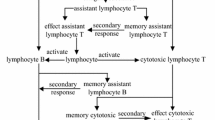Abstract
The existing algorithms to solve dynamic multiobjective optimization (DMO) problems generally have difficulties in non-uniformity, local optimality and non-convergence. Based on artificial immune system, quantum evolutionary computing and the strategy of co-evolution, a quantum immune clonal coevolutionary algorithm (QICCA) is proposed to solve DMO problems. The algorithm adopts entire cloning and evolves the theory of quantum to design a quantum updating operation, which improves the searching ability of the algorithm. Moreover, coevolutionary strategy is incorporated in global operation and coevolutionary competitive operation and coevolutionary cooperative operation are designed to improve the uniformity, the diversity and the convergence performance of the solutions. The results on test problems and performance metrics compared with ICADMO and DBM suggest that QICCA has obvious effectiveness and advantages which shows great capability of evolving convergent, diverse and uniformly distributed Pareto fronts.













Similar content being viewed by others
References
Back T (1998) On the behavior of evolutionary algorithms in dynamic fitness landscape. Proceedings of IEEE international conference on evolutionary computation, Anchorage, In, pp 446–451
Branke J (2002) Evolutionary optimization in dynamic environments. Kluwer Academic Publishers, Dordrecht
Chambers JM, Cleveland WS, Kleiner B et al (1983) Graphical methods for data analysis. Wadsworth Brooks/Cole, Pacific Grover
Coello CAC, Cortes NC (2002) An approach to solve multiobjective optimization problems based on an artificial immune system. In: Proceedings of 1st international conference artificial immune system. Int Center Adv Res Identificat Sci (ICARIS), pp 212–221
de Castro LN, Timmis J (2002a) Artificial immune systems: a new computational intelligence approach. Springer, Berlin, pp 1–357
de Castro LN, Timmis J (2002b) Learning and optimization using the clonal selection principle. IEEE Trans Evol Comput 6(3):239–251
Deb K, Pratap A, Agarwal S et al (2002) A fast and elitist multiobjective genetic algorithm: NSGA-II. IEEE Trans Evol Comput 6(2):182–197
Farina M, Deb K, Amato P (2004) Dynamic multiobjective optimization problems: test cases, approximations, and applications. IEEE Trans Evol Comput 8(5):425–442
Goh CK, Tan KC (2007) An investigation on noisy environments in evolutionary multiobjective optimization. IEEE Trans Evol Comput 11(3):354–381
Goh CK, Tan KC (2009) A competitive-cooperative coevolutionary paradigm for dynamic multiobjective optimization. IEEE Trans Evol Comput 13(1):103–127
Gong MG, Du HF, Jiao LC (2006) Optimal approximation of linear systems by artificial immune response. Sci China Ser F Inf Sci 49(1):63–79
Gong MG, Jiao LC, Du HF et al (2008) Multiobjective immune algorithm with nondominated neighbor-based selection. Evolutionary Computation. MIT Press, Cambridge, pp 225–255
Jiao LC, Li YY, Gong MG et al (2008) Quantum-inspired immune clonal algorithm for global optimization. IEEE Trans Syst Man Cybern Part B 38(5):1234–1253
Jiao LC, Liu J, Zhong WC (2006) An organizational coevolutionary algorithm for classification. IEEE Trans Evol Comput 10(1):67–80
Leung YW, Wang YP (2003) U-measure: a quality measure for multiobjective programming. IEEE Trans Syst Man Cybern Part A 33(3):337–343
Li YY, Shi HZ, Jiao LC et al (2012a) Quantum evolutionary clustering algorithm based on watershed applied to SAR image segmentation. Neurocomputing 87:90–98
Li YY, Xiang RR, Jiao LC et al (2012b) An improved cooperative quantum-behaved particle swarm optimization. Soft Comput 16:1061–1069
Liu RC, Sheng ZC, Jiao LC et al (2010) Immunodomaince based clonal selection clustering algorithm. IEEE congress on, evolutionary computation, pp 1–7
Maravall D, de Lope J (2007) Multi-objective dynamic optimization with genetic algorithms for automatic parking. Soft Comput 11:249–257
Nebro AJ, Alba E, Luna F (2007) Multi-objective optimization using grid computing. Soft Comput 11: 531–540
Pulmannnova S (2001) On the role of quantum structures in the foundations of quantum theory. Soft Comput, 135–136
Shang RH, Jiao LC, Gong MG et al (2005) Clonal selection algorithm for dynamic muitiobjective optimization. In: Hao Y, Liu JM, Wang YP et al. (eds) Proceedings of the 2005 international conference on computational intelligence and security. Lecture Notes in Computer Science, LNCS, vol 3801. Springer, Berlin, pp 846–851
Shang RH, Jiao LC, Liu F et al (2012) A novel immune clonal algorithm for MO problems. IEEE Trans Evol Comput 16(1):35–50
Van Veldhuizen DA, Lamont GB (2000) On measuring multiobjecitve evolutionary algorithm performance. In: Congress on evolutionary computation (CEC 2000), vol 1. IEEE Press, Piscataway, pp 204–211
Wang YP, Dang CY (2008) An evolutionary algorithm for dynamic multi-objective optimization. Appl Math Comput 205(1):6–18
Yu YF, Qian F, Liu HM (2010) Quantum clustering-based weighted linear programming support vector regression for multivariable nonlinear problem. Soft Comput 14:921–929
Zitzler E, Thiele L (2005) A simple mulf-membered evolution strategy to solve constraint optimization problems. IEEE Trans Evol Comput 9(1):1–17
Acknowledgments
We would like to express our sincere appreciation to the anonymous reviewers for their insightful comments, which have greatly helped us in improving the quality of the paper. This work was partially supported by the National Basic Research Program (973 Program) of China under Grant 2013CB329402, the National Natural Science Foundation of China, under Grants 61001202, 61203303,and 61272279, the National Research Foundation for the Doctoral Program of Higher Education of China, under Grants 20100203120008, the Fundamental Research Funds for the Central Universities, under Grant K5051302028, the Fund for Foreign Scholars in University Research and Teaching Programs (the 111 Project) under Grant B07048, and the Program for Cheung Kong Scholars and Innovative Research Team in University under Grant IRT1170.
Author information
Authors and Affiliations
Corresponding author
Additional information
Communicated by Y.-S. Ong.
Rights and permissions
About this article
Cite this article
Shang, R., Jiao, L., Ren, Y. et al. Quantum immune clonal coevolutionary algorithm for dynamic multiobjective optimization. Soft Comput 18, 743–756 (2014). https://doi.org/10.1007/s00500-013-1085-8
Published:
Issue Date:
DOI: https://doi.org/10.1007/s00500-013-1085-8




